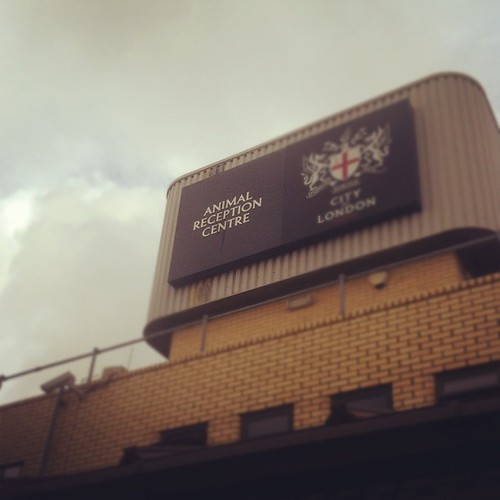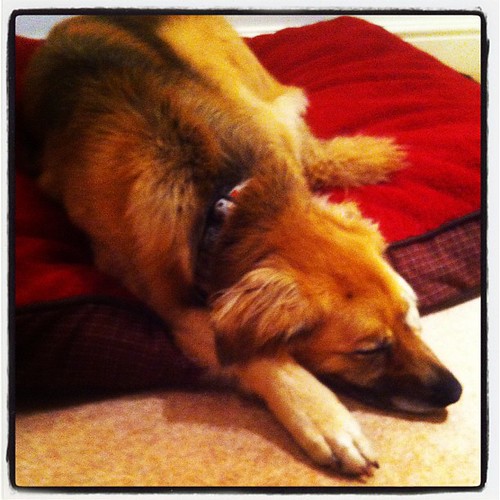After six long months (for reasons entirely of our own doing), our wee family is finally intact again – we’ve got our dog back!
Moving your pet internationally is not for the faint of heart, or the thin of wallet! Oy. The dog’s new nickname is Million Dollar Baby.
Even with the elimination of quarantine for dogs entering the UK from Canada, it’s still a somewhat complicated process to pack up your pet and send them over.
The DEFRA site is a useful guide. And since Sasha was traveling unaccompanied (i.e. not on the same flight as us) we also used the services of Worldwide Animal Travel, who were incredibly helpful getting us organized on both ends so Sasha had the smoothest journey possible.
So what all is involved? First and foremost, your dog must be microchipped, with a chip that’s readable by an ISO scanner. Those are NOT the standard microchips used in North America, so ensure you’ve asked for an ISO chip specifically from your vet.
Once your dog’s been microchipped, it’ll need an updated rabies vaccination (whether or not one is due at that time). You’ll also need to include the original vaccination certificate (with the original label for the rabies vaccine dose), and a copy of your microchip registration certificate with your import paperwork.
Then you need to find an appropriate crate. It must be airline approved and big enough that your pet can turn around freely inside, lie down easily, and when sitting or standing naturally, has 2″ of clearance above the top of its head. Of course Sasha’s existing crate (which was the biggest one we could get at the time) was too small.
This is where the “thin of wallet” part comes in. For our long, tall dog, we had to upgrade to the “Giant” crate, running about $300. Then your cargo rate is charged based entirely on your crate’s dimensions (not weight). So we paid about $2500 just for Sasha’s flight (never mind any of the pre-post flight vet appointments, delivery, etc.).
It’s a good thing she’s cute!
Within 5 days of departure, it’s time for a final vet-check and tapeworm vaccination. Then it’s go-time.
Animals fly in a pressurized cargo area of the plane. There are generally restrictions on when animals may travel cargo over the shipping-heavy Christmas season, and through certain destinations in the hottest and coldest weather, since not all cargo areas are temperature-controlled.
I was a little worried about how our old, crate-hating dog would fare, but when we picked her up, Sasha was better than I’d expected. She was happy, alert, and thrilled to see us.
The people at the Animal Reception Centre were fantastic. I am convinced this is the secret heart of the airport; where all the goodwill and kindness we wished were involved with flying actually lives. Also, it is the only spot at the airport with free parking.
Upon arrival pets are cleared by customs, then unboxed, fed, and watered. At the ARC they are given another vet inspection and microchip verification, as well as a check of all their paperwork. This can take a few hours, depending on how busy they are.
Our contacts at Worldwide Animal Travel gave us the best tip of all when they said to call ahead that morning and see how long it might take for Sasha to clear. We didn’t wait more than 20 minutes to get her – though if you do end up waiting, their waiting area is actually quite nice!
We did hit a small snag trying to get our giant crate home – it wouldn’t fit in our car! So we had to arrange for a courier to pick it up and deliver it to us a few days later. Yet another thing to keep in mind if you ever want to fly your big dog anywhere!
But for all the bureaucracy, expense, and crate-drama – it was worth it! We may not have furniture yet (another story for another day), but this house already feels like more of a home with the big, hairy doofus off chasing squirrels in her sleep in the corner.





Hooray! Welcome home, Sasha 🙂
Yay! I’m so happy to hear that your pup is with you now. 🙂
Crissy´s last blog post ..Abnormal – yep, that’s me